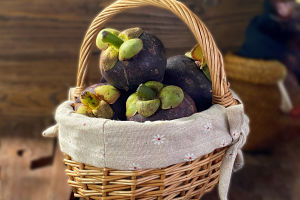Chocolate is a beloved treat made by blending cocoa beans with sugar.
Below is a comprehensive introduction to chocolate, including its history, production process, types and flavors, and potential health benefits.
1. History:
Chocolate has a rich history that can be traced back to the ancient Mayan and Aztec civilizations of Mesoamerica. These cultures revered cacao as a valuable food and medicinal ingredient, utilizing it to create a bitter beverage.
It wasn't until the 16th century that Spanish explorers introduced cocoa to Europe, where it was combined with sugar and other ingredients to enhance its flavor, giving rise to the more delectable chocolate we know today.
2. Production Process:
The production of chocolate involves several crucial steps:
Harvesting and Fermentation: Cocoa beans are extracted from the fruits of the cocoa tree and then fermented.
Roasting and Grinding: The fermented cocoa beans are subjected to low-temperature roasting and subsequently ground to form a cocoa mass or cocoa liquor.
Processing of Cocoa Mass: The cocoa mass is pressed to separate cocoa butter from cocoa solids.
Chocolate Manufacturing: The cocoa solids are ground further to produce cocoa powder, which is then mixed with sugar, dairy, and flavorings to create the fundamental chocolate recipe.
Conching and Blending: The chocolate mixture undergoes refinement and blending to ensure optimal texture and taste.
Flowing and Shaping: The chocolate mixture is carefully liquefied at specific temperatures and poured into molds for shaping.
Curing and Packaging: The chocolate solidifies during the cooling process and is subsequently packaged for sale.
3. Types and Flavors:
Chocolate comes in a wide array of types and flavors. Here are some common examples:
Dark Chocolate: With a high cocoa solids content, minimal sugar, and no dairy, dark chocolate offers an intense cocoa flavor.
Milk Chocolate: Milk powder or liquid milk is added to create a creamier and sweeter taste.
White Chocolate: Made solely from cocoa butter without cocoa solids, white chocolate possesses a flavor profile resembling cream and vanilla.
Nutty Chocolate: Various nuts, such as almonds, cashews, or hazelnuts, are added to provide a delightful crunch.
Filled Chocolates: These chocolates have fillings such as caramel, jam, or cream, adding a burst of flavor.
4. Health Benefits:
When consumed in moderation, chocolate can offer some potential health benefits. It is important to be mindful of the sugar and fat content in excessive quantities. Here are a few notable advantages:
Antioxidants: Cocoa contains compounds that act as antioxidants, helping to combat the harmful effects of free radicals.
Cardiovascular Health: Research suggests that certain compounds in cocoa may contribute to cardiovascular well-being.
Mood Enhancement: Specific ingredients found in chocolate, like phenylethylamine and dimethyltryptamine, can help improve mood and elevate feelings of happiness.
In conclusion, chocolate is a delightful food with a broad range of flavors and types to suit diverse preferences. Moderation is key when enjoying chocolate, as it can offer some positive health effects.
Now, let's explore some delectable chocolate treats:
1. Chocolate Cake: A classic dessert consisting of layers of chocolate cake, adorned with luscious chocolate cream or sauce.
2. Chocolate Chip Cookies: Popular as a snack, these cookies are baked with added chocolate chips or swirled with chocolate sauce in the batter.
3. Chocolate Ice Cream: A beloved frozen treat, chocolate ice cream is made with a chocolate-flavored base and can be garnished with chocolate chips or sauce.
4. Hot Chocolate: A comforting beverage made by blending chocolate with milk, often topped with whipped cream or marshmallows.
These are merely a few examples of the delectable chocolate delights available, and there are countless other creative and unique chocolate creations awaiting exploration!


